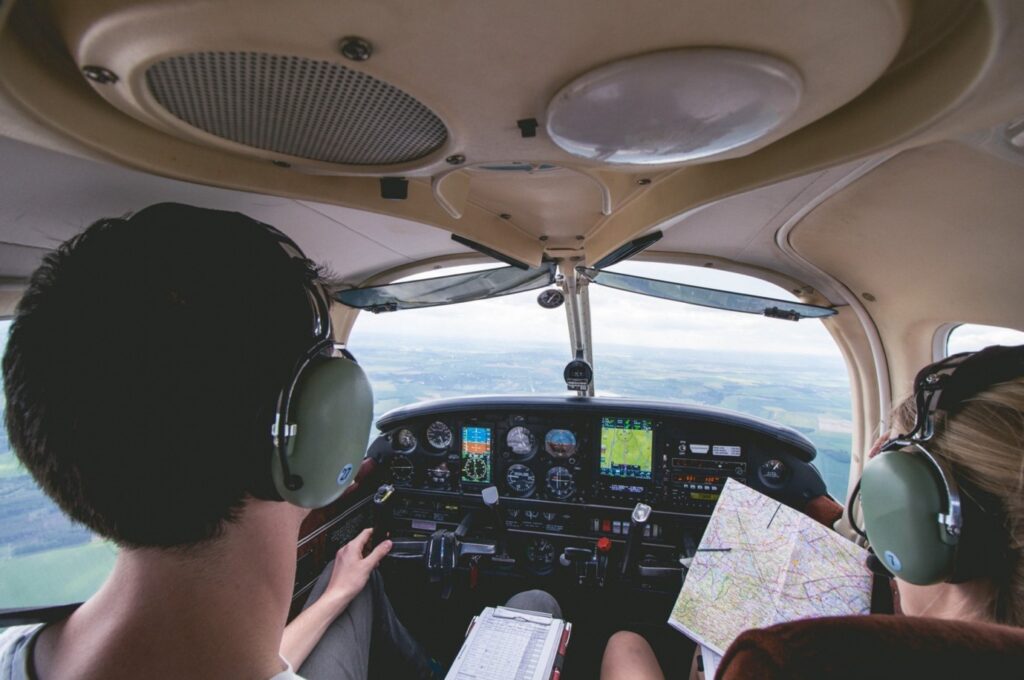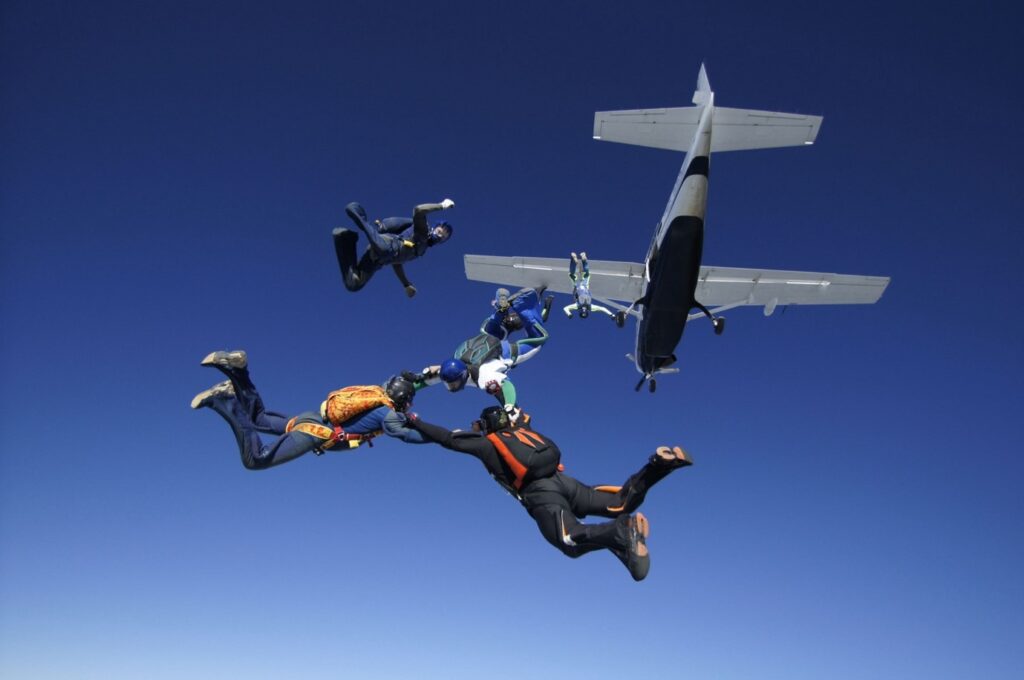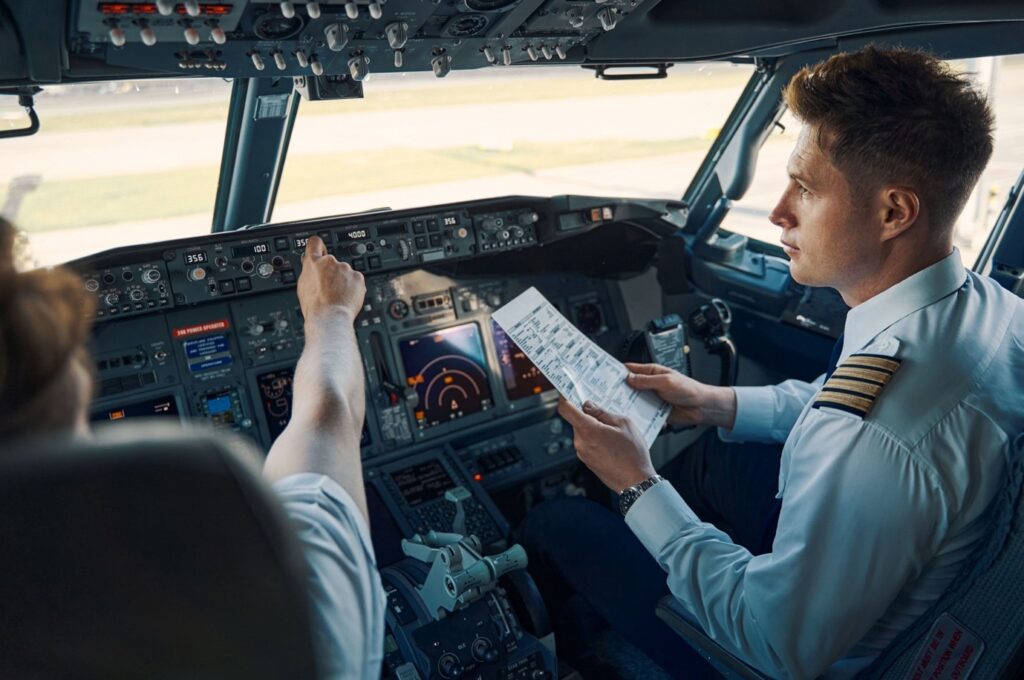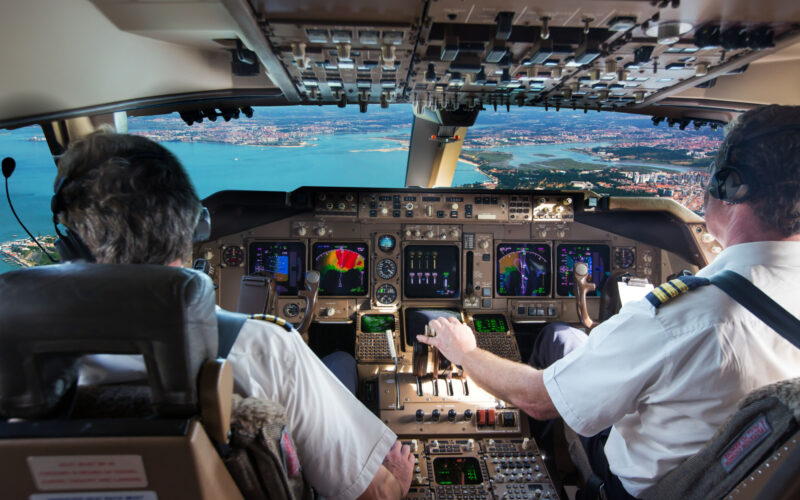Becoming a commercial airline pilot is a dream that’s captured the hearts of many individuals with a passion for aviation over the years. However, this career path requires dedication, hard work, and significant investment in training and flight hours. While the journey may seem challenging, though, it is essential to recognize that anything is possible with perseverance and determination.
In this article, we will delve into the various stages of becoming a commercial airline pilot, exploring exactly how long it takes to obtain the necessary licenses and certifications. From the initial step of obtaining a Private Pilot License (PPL) to the advanced training required for a Commercial Pilot License (CPL) and beyond, we will highlight the milestones that pave the way to forging a successful career as a pilot.
Getting a pilot license
The first step towards becoming a commercial airline pilot is obtaining a PPL. To be eligible for a PPL, aspiring pilots in the United States (US) and Europe must be at least 16 years old to fly solo and 17 years old to receive the private pilot certificate. Additionally, they need to obtain a third-class medical certificate and complete a minimum number of flight hours. The European Union Aviation Safety Agency (EASA) requires 45 hours of flight time, while the Federal Aviation Administration (FAA) requires 40 hours. In practical terms, it generally requires approximately 50-70 hours of training to attain the necessary proficiency.
The training for a PPL includes flight lessons and theoretical knowledge exams covering subjects such as aviation regulations, aerodynamics, meteorology, navigation and more. After completing the training, aspiring pilots must pass a practical flight test to demonstrate their flying skills and knowledge.

On average, the whole process of obtaining a PPL usually takes about 6-12 months, although the specific timeline can vary depending on factors such as the flight school, individual student progress and other considerations.
Building necessary flight experience
Flight hours
After obtaining a PPL, aspiring pilots need to build flight experience. They must log a certain number of flight hours as per the requirements set by aviation authorities. For example, in Europe, aspiring commercial pilots need to have at least 250 hours of flight time, but in the US a 1,500-hour rule applies.
As such, to become eligible for an Airline Transport Pilot (ATP) certificate in the US a pilot must accumulate at least 1,500 total flight hours, including the specified flight hour categories:
• A minimum of 500 hours of cross-country flight time
• A minimum of 100 hours of night flight time
• A minimum of 75 hours of instrument flight time (actual or simulated instrument conditions)
• 250 hours as pilot in command
• 50 hours of flight time specifically in the class of airplane for which the ATP certificate is sought (e.g., multi-engine airplanes or airplanes type-rated with a specific aircraft)
Incidentally, the same categories apply in Europe, but the hour requirements are different.
The ATP certificate is the highest level of pilot certification and is required to serve as a pilot-in-command for scheduled airline operations or in other commercial flying roles. It’s also important to note that US pilots need to be at least 23 years old in order to get an ATP. In Europe, the minimum age requirement for an ATP certificate is 21 years old.
Entry-level flying jobs
Here are some common entry-level flying jobs that pilots often pursue to accumulate flight experience:
- Flight instructors: becoming a flight instructor is a popular path for pilots to gain experience. Flight instructors teach and train student pilots, which allows them to log flight hours while helping others learn to fly.
- Banner tow pilots: banner tow pilots fly aircraft towing advertising banners. This job often involves flying in various weather conditions and requires precision and skill.
- Aerial survey pilots: aerial survey pilots fly aircraft equipped with specialized sensors and cameras to collect data for mapping, agriculture, environmental monitoring and other purposes.
- Skydiving pilots: pilots who accompany skydivers fly them to the desired altitude and ensure safe aircraft operations during the jumps.
- Pipeline patrol pilots: pipeline patrol pilots monitor oil and gas pipelines from the air to detect leaks, damage, or potential issues.
- Traffic watch pilots: traffic watch pilots provide real-time traffic updates for radio and TV stations by flying over congested areas and reporting on traffic conditions.
By working in any of these jobs, pilots can build up their flight hours, gain valuable experience and improve their flying skills, all of which are necessary to meet the flight hour requirements for advanced certifications such as ATP.
There are different possible ways forward at this stage in a pilot’s career. Some may be able to achieve the required hours within a couple of months, while others may take several years to reach that milestone.

Private instrument rating
The Instrument Rating (IR) is the next step for pilots after obtaining their PPL and a crucial milestone in their aviation career. With an IR, pilots gain the ability to fly in Instrument Meteorological Conditions (IMC), which means they can fly through clouds, in low visibility, and during adverse weather conditions where visual references to the ground or horizon may be limited or nonexistent. This level of training enhances a pilot’s skills and safety, as it allows them to navigate solely by referring to instrumentation.
The process of obtaining an IR typically involves the following steps:
- Ground school: before starting the flight training, pilots undergo a ‘ground school’ to learn the theoretical knowledge required for instrument flying. This includes topics such as instrument procedures, flight planning, navigation techniques, weather interpretation and regulations related to instrument-based flight.
- Flight training: flight training for the IR involves a specific number of hours of dual instruction with a certified flight instructor. During these lessons, pilots learn to control the aircraft solely by reference to instruments, while performing various maneuvers and procedures. They will practice tasks
lsuch as flying solely on instruments, holding patterns, approaches and various emergency scenarios that may occur in IMC. - Cross-country flights: pilots will also undertake cross-country flights under instrument-based conditions to gain real-world experience in handling different types of airspace, air traffic control procedures, and communication in IMC.
- Instrument rating written exam: after completing the required flight training, pilots must pass a written exam in order to demonstrate their knowledge of instrument flying concepts, procedures and regulations.
- Practical test: once the flight training is complete and the written exam has been passed, pilots will undergo a practical test, commonly referred to as a checkride. This checkride involves a flight with an FAA-designated examiner or an authorized check pilot. During the checkride, pilots must demonstrate their ability to fly safely and competently under instrument-based conditions, including various maneuvers and procedures.
Typically, it takes around 2-4 months for most individuals to complete the IR training.
Commercial pilot license
Once pilots have accumulated the required flight experience and completed the necessary training, they can apply for a commercial pilot license (CPL). This enables the pilot to fly for compensation or hire, so they can become a paid airline pilot, for example. The CPL training includes advanced flight maneuvers, cross-country flights and more.
Here are the key aspects of obtaining a CPL:
- Prerequisites: before starting CPL training, aspiring pilots must meet certain prerequisites set by the aviation authority of their country. In the US for example, these requirements include being at least 18 years old, holding a PPL, and meeting specific medical and English language proficiency standards.
- Flight hours: as mentioned earlier, for European pilots at least 250 hours of flight time are required, or for US pilots 1,500 hours.
On average, it takes about 6-12 months for most pilots to complete the CPL training and meet the requisite flight hours. However, this timeframe can be longer or shorter depending on how frequently the pilot flies, the weather conditions, the training program’s structure and other factors.
Once a pilot obtains their CPL, they can pursue a career in aviation and work toward additional qualifications, such as an IR for more flying opportunities, or an ATP license.
It is important to note that, for most aviation authorities, pilots do not need to have an IR before obtaining a CPL.
Single-engine, multi-engine, and type ratings
Single-engine, multi-engine and type ratings are additional certifications that pilots can pursue to expand their flying capabilities, increase career opportunities and enhance their employability, particularly in commercial aviation. Let’s take a closer look at each of these ratings:
- Single-engine rating: this is the most basic rating that pilots typically achieve when they complete their PPL training. A single-engine rating allows a pilot to operate an aircraft that has only one engine. This is the starting point for most pilots and covers a wide range of general aviation aircraft used for personal and recreational flying.
- Multi-engine rating: a multi-engine rating is an additional certification that allows a pilot to fly aircraft with more than one engine. Many commercial airliners and larger general aviation aircraft fall into this category. The multi-engine rating involves specialized training, which includes learning about the unique handling characteristics and performance considerations of multi-engine aircraft. Pilots also study engine-out procedures and how to manage emergencies related to multi-engine operations.
- Type ratings: a type rating is a specialized certification required for pilots to operate specific aircraft models that have complex systems or performance characteristics. For commercial airline pilots, the type rating is a crucial step towards flying large transport-category aircraft, such as Boeing 737, Airbus A320, Boeing 787 or Airbus A350. Each aircraft model requires a specific type rating.
Type ratings are regulated by aviation authorities and typically involve extensive training, both in the classroom and in full-flight simulators. Pilots undergo ground school, simulator sessions and practical flight training to demonstrate their proficiency in handling the specific aircraft type.
In general, pilots pursuing single-engine and multi-engine ratings might complete their training in a few months, possibly a year, depending on their availability and progress. For type ratings, the time can range from a few weeks to several months, depending on the aircraft’s complexity and the pilot’s prior experience with similar aircraft.

Becoming a first officer
Becoming a first officer is a significant milestone for pilots who have obtained their CPL and other necessary ratings. It marks the beginning of their professional flying career in commercial aviation. First officers, also known as co-pilots or second officers, work alongside the captain in the cockpit and play a crucial role in ensuring safe and efficient flight operations.
Here are some key points about becoming a first officer:
- Entry-level position: first officer positions are typically entry-level roles in commercial aviation, especially for pilots aiming to fly for regional or smaller airlines. While some airlines may hire new pilots directly as first officers, others might require candidates to have a minimum number of flight hours and experience in order to be eligible for this position.
- Gain flight experience: working as a first officer allows pilots to accumulate valuable flight experience in real-world commercial operations. They get hands-on experience with multi-crew cockpit environments, airline procedures, and navigating through various types of airspace and airports.
- Crew Resource Management (CRM): first officers learn and practice CRM, which emphasizes effective communication and teamwork in the cockpit. CRM training helps them work collaboratively with the captain and other crew members in order to make informed decisions during flights.
- Career progression: as first officers gain experience and flight hours, they progress in their careers toward becoming pilot captains (also known as airline captains). Captaincy is the next step in the career ladder for commercial pilots and involves being in command of the aircraft.
- Type rating: to work as a first officer in a specific aircraft type, pilots may need to undergo additional type rating training for that aircraft as mentioned earlier.
- Continuing education and training: first officers are required to undergo regular recurrent training to stay current on regulations, procedures, and aircraft systems. This ongoing training ensures that they maintain the highest level of proficiency and safety standards.
- Networking and experience building: while working as a first officer, pilots have the opportunity to network with industry professionals, including captains, flight attendants, and airline management. Building professional relationships can be beneficial for career advancement and potential job opportunities with larger airlines in the future.
- Career advancement: many first officers got on to become pilot captains after gaining sufficient experience, meeting airline requirements and obtaining their ATP license.
Attaining pilot captaincy
Becoming a pilot captain is the pinnacle of a commercial pilot’s career. The timeline to achieve captaincy varies widely based on individual performance, experience, and opportunities for advancement within an airline.
In total, then, the process for becoming a commercial airline pilot can take between 2 to 8 years approximately, or more depending on individual circumstances and the path taken.




